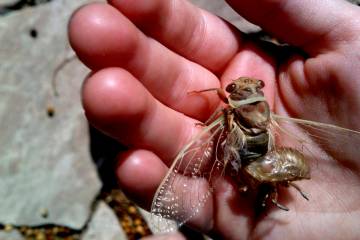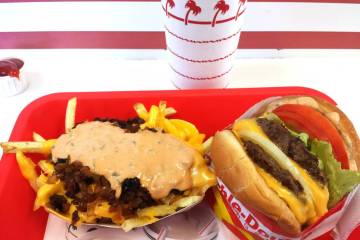Buick Y-Job was possibly first, most influential concept car
Chances are you have never seen it, or even heard of it, but there's a little piece of the 1938 Buick Y-Job in every one of today's automobiles.
That's because this 20-foot-long dream machine just happens to be one of the first -- if not the first -- concept car to ever be built. From its hidden headlights to the tip of its massive rear bumper, the Y-Job is pure automotive sculpture that was never intended to be sold. It was built for one reason only: to stare into the face of the future.
Before its conception, most auto makers really didn't look too far down the road. They simply went from rough sketch, to blueprint and then straight to the production line.
The Y-Job changed all that. The car was all about possibilities. It was a what-if peak into the future of four-wheeled transportation. It was a test of ideas, both practical and fanciful. Today we'd call the process "out-of-the-box thinking" or "pushing the envelope," but in the 1930s, the Y-Job was simply out of this world.
The idea sprung from the fertile mind of Harley Earl who was head of General Motors Corp.'s art and color section. Earl's background made him perfectly suited to the role of stylist. Before joining the company in 1926, he had worked in Hollywood, Calif., creating one-off custom bodies for Earl Automobile Works, a company founded by his father. Among the rich and the famous who patronized the business were silent movie stars Tom Mix and Roscoe "Fatty" Arbuckle. The company also built aircraft fuselages, an area of design that would influence young Earl for the rest of his life.
Once at GM, Earl set about making a name for himself and impressing his new boss, Alfred P. Sloan, the company's president. It was the far-sighted Sloan who recognized the merits of developing a separate styling department within the corporation's structure. This would, he reasoned, give GM a huge advantage over its competitors by injecting the creative process into what was then a purely engineering exercise.
One of Earl's first tasks was to work on the 1927 LaSalle, an all-new and upscale brand that, would come to rival Cadillac. In March of that year, the LaSalle reached dealer showrooms and was an immediate success. Buyers raved about the car's longer, lower and wider stance, a theme that would be repeated on many of the designer's future creations.
Not everything Earl designed was as successful as the LaSalle. Many of his early works were altered by members of the engineering division who viewed his Art and Color section as a direct threat to their independence.
Earl's development of the Buick Y-Job (the letter "Y" was used by the aircraft industry to denote a prototype) avoided outside interference from other GM departments as much as possible. The two-door convertible body was intended to sit on an existing Buick Century Chassis and run with a stock 320-cubic-inch inline eight-cylinder engine that produced 141 horsepower.
Making the Y-Job streamlined and fresh meant lowering the body and lengthening its hood and boat-tail-shaped trunk. From the ground to the top of its raked and shortened wind screen the car was a mere 58 inches tall. The lowering was partially accomplished by installing tiny 13-inch-diameter wheels.
Earl also eliminated the traditional running boards and installed flush-mounted push-button door handles and thin chrome strips along the car's massive fenders to emphasize the concept's long and low styling. The nose retained a version of the Century's toothy grille but the removal of the headlight pods from their traditional spot atop the fenders and concealing them just above the bumper was an important contribution to the Y-Job's shape-of-tomorrow looks.
As a final touch, the first of what would become Buick's "bombsight" hood ornaments was affixed to the hood
Although primarily a theoretical styling exercise, the Y-Job contained a number of important technical advancements, such as finned brake drums (another aircraft-inspired idea), power windows and a power-operated top that, when not in use, retracted inside its own compartment and was concealed by a hinged steel cover. Corvettes of the future would benefit from that clever bit of design magic.
Years before formal market research and focus groups were used to gauge opinion, Earl used the Y-Job for his day-to-day transportation. He could often be spotted heading to and from the office, no doubt receiving direct feedback as he cruised around the streets of Detroit.
After a career spanning more than 30 years with General Motors, Earl retired. By then, the Y-Job had spawned dozens of other dream machines produced by hundreds of designers, all with a mission to imagine the cars and trucks of the future and turn them into full-size three-dimensional expressions of their skill and creativity.
Malcolm Gunn is a feature writer with Wheelbase Communications. You can drop him a note online at www.wheelbase.ws/mailbag.html. Wheelbase is a worldwide supplier of automobile news, reviews and features.





















